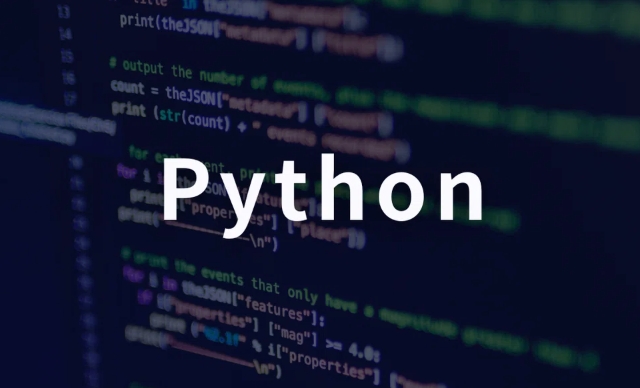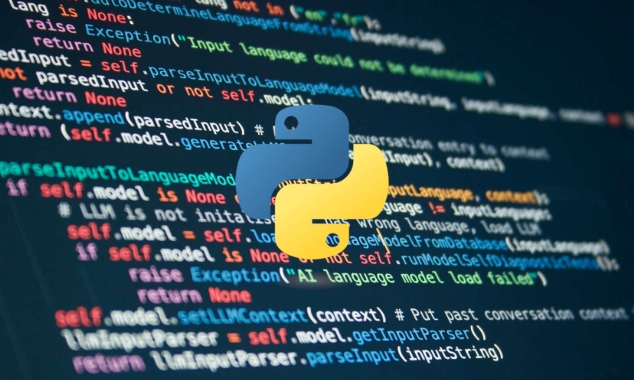How to prevent a method from being overridden in Python?
Jul 13, 2025 am 02:56 AMIn Python, although there is no built-in final keyword, it can simulate unsurpassable methods through name rewriting, runtime exceptions, decorators, etc. 1. Use a double underscore prefix to trigger name override, making it difficult for subclasses to override methods; 2. Use a custom decorator to determine the caller type and throw an exception to prevent subclass redefinition; 3. Use a custom decorator to mark the method as final and check it in combination with metaclasses or class decorators; 4. The behavior can be encapsulated as property attributes to reduce the possibility of being modified. These methods provide varying degrees of protection, but none of them completely restrict the coverage behavior.

In Python, by default, the class methods can be overwritten by subclasses. If you want a method to not be overwritten, the most direct way is to achieve "unoverwritten" effects through naming conventions and design patterns, because Python itself does not have keywords like Java's final or C#'s sealed .

Here are some common practices:
Name overwriting is achieved using double underscore prefix (Name Mangling)
Python provides a mechanism called "Name Mangling". When you precede two underscores (such as __method_name ) of a class's method or property, Python will overwrite the name, making it harder to access or overwrite externally.

class Base:
def __my_method(self):
print("This is a private method")
def call_my_method(self):
self.__my_method()
class Derived(Base):
def __my_method(self):
print("Trying to override")
d = Derived()
d.call_my_method() # Output "This is a private method"illustrate:
- In fact,
Derived.__my_methoddoes not overrideBase.__my_method, but defines a new method. - Because
Base.__my_methodwas renamed to_Base__my_method, there will be no conflict. - This approach is not to completely block coverage, but to make coverage more difficult.
Throw exception directly in the method
If you want to explicitly prohibit subclasses from overwriting a method at runtime, you can add judgment logic to the method. If you detect that the current class is not the original class that defines the method, an exception will be thrown.

class Base:
def my_method(self):
if type(self) != Base:
raise TypeError("my_method cannot be overridden")
print("Original implementation")
class Derived(Base):
def my_method(self):
print("Trying to override")Use scenarios:
- Suitable for situations where you want to find problems during the development or debugging phase.
- The disadvantage is that an error will only be reported when the method is called, and the error cannot be discovered in advance.
Simulate final method using decorator
You can customize a decorator to mark certain methods as "not overridable", and implement final -like functionality by checking whether the methods have been redefined.
def final(method):
setattr(method, '__is_final__', True)
Return method
class Base:
@final
def my_method(self):
print("This is a final method")
class Derived(Base):
def my_method(self):
print("Trying to override")Then you can combine metaclasses or class decorators to check whether the final convention is violated.
Advantages of this method:
- More flexible, and the rules can be customized according to project needs.
- Illegal overwrite behavior can be detected when the class is defined.
But some additional auxiliary code is required to implement the full functionality.
Tips: Use property alternatives
If you do not want a behavior to be modified, you can also consider encapsulating it into a read-only property property.
class Base:
@property
def status(self):
return "original"
class Derived(Base):
@property
def status(self):
return "overridden" # will still be overwrittenHowever, this method cannot really prevent coverage, it just provides an idea.
In general, Python is a language that emphasizes "trust programmers" and does not encourage coercive restrictions on certain behaviors. But in actual development, if you do have the need to prevent methods from being covered, you can achieve "soft limitations" through the above methods.
Basically these methods are all. Although they cannot be completely "sealed", they are enough in most cases.
The above is the detailed content of How to prevent a method from being overridden in Python?. For more information, please follow other related articles on the PHP Chinese website!

Hot AI Tools

Undress AI Tool
Undress images for free

Undresser.AI Undress
AI-powered app for creating realistic nude photos

AI Clothes Remover
Online AI tool for removing clothes from photos.

Clothoff.io
AI clothes remover

Video Face Swap
Swap faces in any video effortlessly with our completely free AI face swap tool!

Hot Article

Hot Tools

Notepad++7.3.1
Easy-to-use and free code editor

SublimeText3 Chinese version
Chinese version, very easy to use

Zend Studio 13.0.1
Powerful PHP integrated development environment

Dreamweaver CS6
Visual web development tools

SublimeText3 Mac version
God-level code editing software (SublimeText3)

Hot Topics
 How do you connect to a database in Python?
Jul 10, 2025 pm 01:44 PM
How do you connect to a database in Python?
Jul 10, 2025 pm 01:44 PM
ToconnecttoadatabaseinPython,usetheappropriatelibraryforthedatabasetype.1.ForSQLite,usesqlite3withconnect()andmanagewithcursorandcommit.2.ForMySQL,installmysql-connector-pythonandprovidecredentialsinconnect().3.ForPostgreSQL,installpsycopg2andconfigu
 How to call parent class init in Python?
Jul 10, 2025 pm 01:00 PM
How to call parent class init in Python?
Jul 10, 2025 pm 01:00 PM
In Python, there are two main ways to call the __init__ method of the parent class. 1. Use the super() function, which is a modern and recommended method that makes the code clearer and automatically follows the method parsing order (MRO), such as super().__init__(name). 2. Directly call the __init__ method of the parent class, such as Parent.__init__(self,name), which is useful when you need to have full control or process old code, but will not automatically follow MRO. In multiple inheritance cases, super() should always be used consistently to ensure the correct initialization order and behavior.
 Python def vs lambda deep dive
Jul 10, 2025 pm 01:45 PM
Python def vs lambda deep dive
Jul 10, 2025 pm 01:45 PM
def is suitable for complex functions, supports multiple lines, document strings and nesting; lambda is suitable for simple anonymous functions and is often used in scenarios where functions are passed by parameters. The situation of selecting def: ① The function body has multiple lines; ② Document description is required; ③ Called multiple places. When choosing a lambda: ① One-time use; ② No name or document required; ③ Simple logic. Note that lambda delay binding variables may throw errors and do not support default parameters, generators, or asynchronous. In actual applications, flexibly choose according to needs and give priority to clarity.
 How to parse an HTML table with Python and Pandas
Jul 10, 2025 pm 01:39 PM
How to parse an HTML table with Python and Pandas
Jul 10, 2025 pm 01:39 PM
Yes, you can parse HTML tables using Python and Pandas. First, use the pandas.read_html() function to extract the table, which can parse HTML elements in a web page or string into a DataFrame list; then, if the table has no clear column title, it can be fixed by specifying the header parameters or manually setting the .columns attribute; for complex pages, you can combine the requests library to obtain HTML content or use BeautifulSoup to locate specific tables; pay attention to common pitfalls such as JavaScript rendering, encoding problems, and multi-table recognition.
 How to handle API authentication in Python
Jul 13, 2025 am 02:22 AM
How to handle API authentication in Python
Jul 13, 2025 am 02:22 AM
The key to dealing with API authentication is to understand and use the authentication method correctly. 1. APIKey is the simplest authentication method, usually placed in the request header or URL parameters; 2. BasicAuth uses username and password for Base64 encoding transmission, which is suitable for internal systems; 3. OAuth2 needs to obtain the token first through client_id and client_secret, and then bring the BearerToken in the request header; 4. In order to deal with the token expiration, the token management class can be encapsulated and automatically refreshed the token; in short, selecting the appropriate method according to the document and safely storing the key information is the key.
 How to continue a for loop in Python
Jul 10, 2025 pm 12:22 PM
How to continue a for loop in Python
Jul 10, 2025 pm 12:22 PM
In Python's for loop, use the continue statement to skip some operations in the current loop and enter the next loop. When the program executes to continue, the current loop will be immediately ended, the subsequent code will be skipped, and the next loop will be started. For example, scenarios such as excluding specific values ??when traversing the numeric range, skipping invalid entries when data cleaning, and skipping situations that do not meet the conditions in advance to make the main logic clearer. 1. Skip specific values: For example, exclude items that do not need to be processed when traversing the list; 2. Data cleaning: Skip exceptions or invalid data when reading external data; 3. Conditional judgment pre-order: filter non-target data in advance to improve code readability. Notes include: continue only affects the current loop layer and will not
 How to scrape a website that requires a login with Python
Jul 10, 2025 pm 01:36 PM
How to scrape a website that requires a login with Python
Jul 10, 2025 pm 01:36 PM
ToscrapeawebsitethatrequiresloginusingPython,simulatetheloginprocessandmaintainthesession.First,understandhowtheloginworksbyinspectingtheloginflowinyourbrowser'sDeveloperTools,notingtheloginURL,requiredparameters,andanytokensorredirectsinvolved.Secon
 Access nested JSON object in Python
Jul 11, 2025 am 02:36 AM
Access nested JSON object in Python
Jul 11, 2025 am 02:36 AM
The way to access nested JSON objects in Python is to first clarify the structure and then index layer by layer. First, confirm the hierarchical relationship of JSON, such as a dictionary nested dictionary or list; then use dictionary keys and list index to access layer by layer, such as data "details"["zip"] to obtain zip encoding, data "details"[0] to obtain the first hobby; to avoid KeyError and IndexError, the default value can be set by the .get() method, or the encapsulation function safe_get can be used to achieve secure access; for complex structures, recursively search or use third-party libraries such as jmespath to handle.






